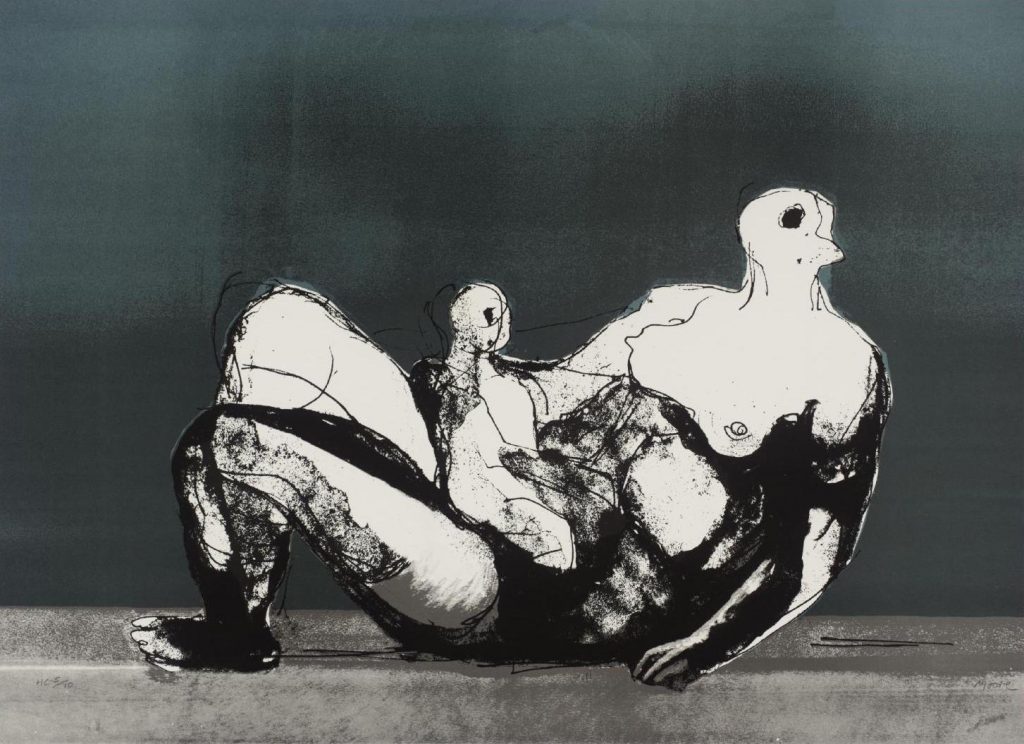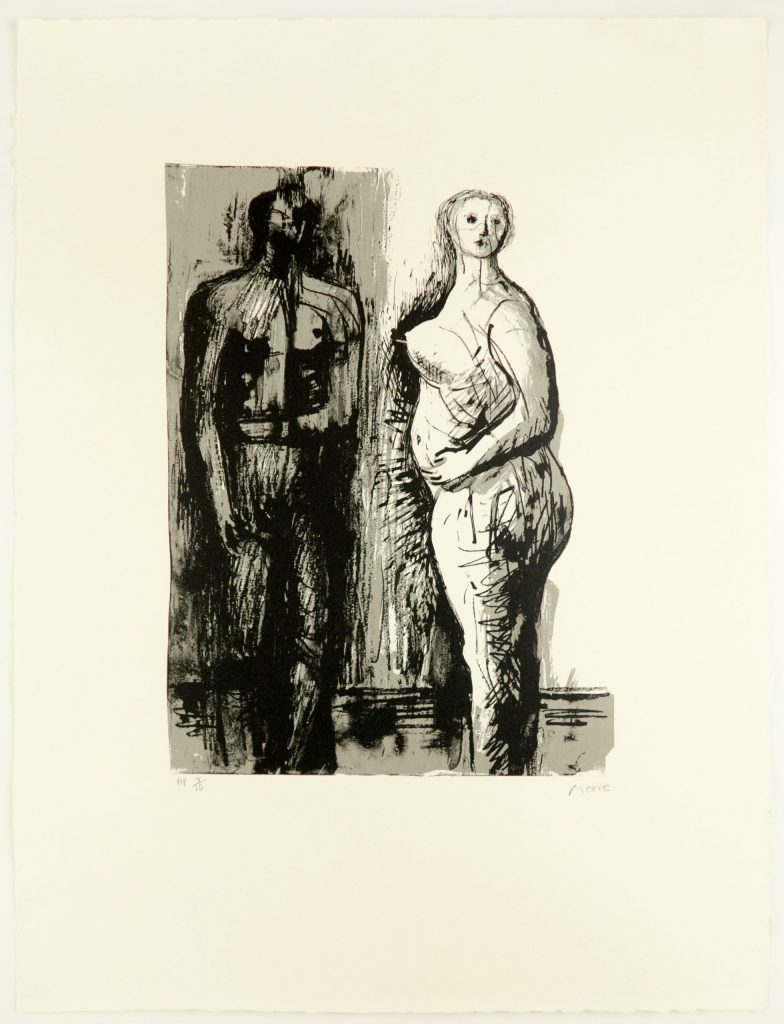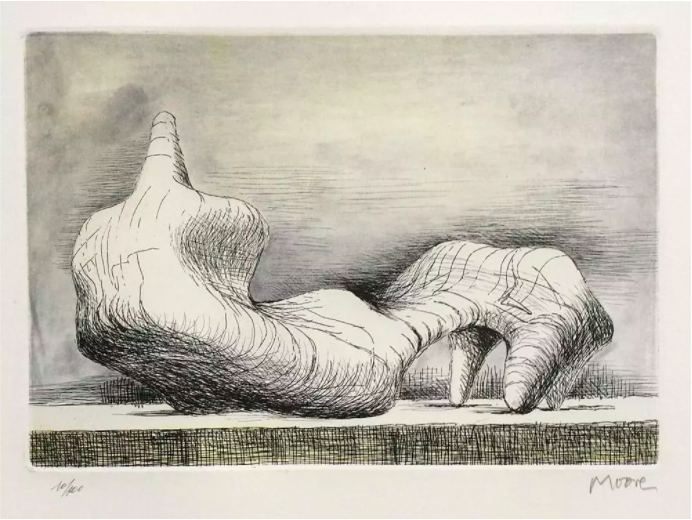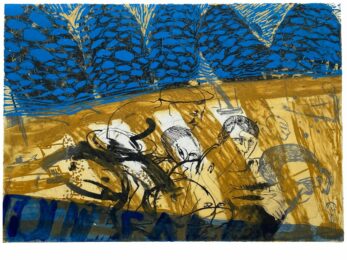10 Things To Know About Henry Moore
- 1. Henry Moore was born on the 30th July 1898, the seventh child of a Yorkshire coal miner
His father wanted his children to have a better life instead of working in the mines, instead insisting they reach higher education. He was strongly opposed to Moore’s wish to pursue a life as a sculptor as he believed it was manual labour. Moore did in fact train as a teacher, working at the grammar school in Castleford where he had previously been educated himself.
- 2. Moore was gassed at the Battle of Cambrai on 30 November 1917
After recovering, he spent the rest of the war as a PT instructor. However, his war service allowed him to claim an ex-serviceman’s grant, in 1919 becoming a student at Leeds School of Art. Here he worked at a specially designed sculpture studio. Whilst a student at Leeds he was offered access to the university chancellor, Sir Michael Sadler’s private collection, where he initially became aware of Modernism. He also started a lifelong friendship with Barbara Hepworth, not to mention a healthy professional rivalry.
- 3. The chacmool, a type of reclining Aztec statuary, is perhaps his greatest single influence
In the 1950s, Moore spent a lot of time at the British Museum, due to so much of the primitive sculpture there distinguished by complete cylindrical realisation.
He soon came across the two themes that the remainder of his life could revolve around. The first one was the mother and child, bringing together Christian imagery with the humanity of African art. In 1924 at the Paris Trocadero, Moore took in a chacmool in plaster cast, and this reclining figure was to become Moore’s second major sculptural motif.
- 4. Moore switched to direct carving in the early 1920s
He was inspired particularly by the works of Jacob Epstein, Constantin Brancuși, Frank Dobson and Henri Gaudier-Brzeska. Direct carving had not been witnessed before in British sculpture, and was taken up by a triumvirate of promising Royal College sculptors: Hepworth, Moore and John Skeaping (Hepworth’s first husband).
-

Reclining Mother and Child with Blue Background by Henry Moore - 5. He became briefly involved with Surrealism
Moore joined Paul Nash’s “Unit One” and in 1936 served on the organising committee of the International Surrealist Exhibition, along with Nash and Roland Penrose. While he didn’t ever make the transition into Surrealism, Moore’s interaction with international artists associated with the movement, including Jean Arp, drew his attention to the possibilities of biomorphism – abstract forms that look similar to natural objects.
- 6. He found an unlikely supporter in Kenneth Clark
The celebrated art historian, broadcaster and museum director took possession of a number of Moore’s 1940 drawings of Londoners seeking shelter in the London Underground from the Blitz. Clark was chairman of the War Artists’ advisory committee, and the WAAC commissioned further pieces which were finished between autumn 1940 and spring 1941. They are still some of the most iconic artworks of World War Two.
- 7. His studio was bombed in September 1940
Like a number of the artists who had resided in Hampstead between the wars, Moore moved to the countryside and away from the city. He settled in Perry Green, near Much Hadham in Hertfordshire in a farmhouse called Hoglands.
- 8. Such was Moore’s dominance of British sculpture that a generation of sculptors revolted against him
At the British Pavilion of the 1952 Venice Biennale, the pioneering New Aspects of British Sculpture exhibition was a direct challenge to Hepworth and Moore. It featured a group of young sculptors including Kenneth Armitage, Lynn Chadwick and Reg Butler, all portraying what Herbert Read called a ‘Geometry of Fear’. They had common cause with European post-war sculptors of the time, like Germaine Richier and Giacometti, who closely considered man’s post-war existential crisis.
- 9. Moore gave away many sculptures on condition that they would be installed in public places
As well as receiving commissions for substantial outdoor sculptures from the 1950s onwards, Moore designed a reclining figure that was to be displayed outside the Paris UNESCO building in 1958. Additionally, he created “Knife Edge Two Piece” between the years 1962 and 1965 to reside in London’s Parliament Square.
- 10. By the end of the 1970s, his work was appearing in more than 40 exhibitions every year
Moore was known for his huge financial wealth but despite this he actually lived very frugally. Apart from a couple of extensions to his studio, his house in Perry Green is almost unchanged since he bought it. The Henry Moore Foundation was set up in 1977, and now runs his Perry Green house as a museum which is dedicated to the artist.




